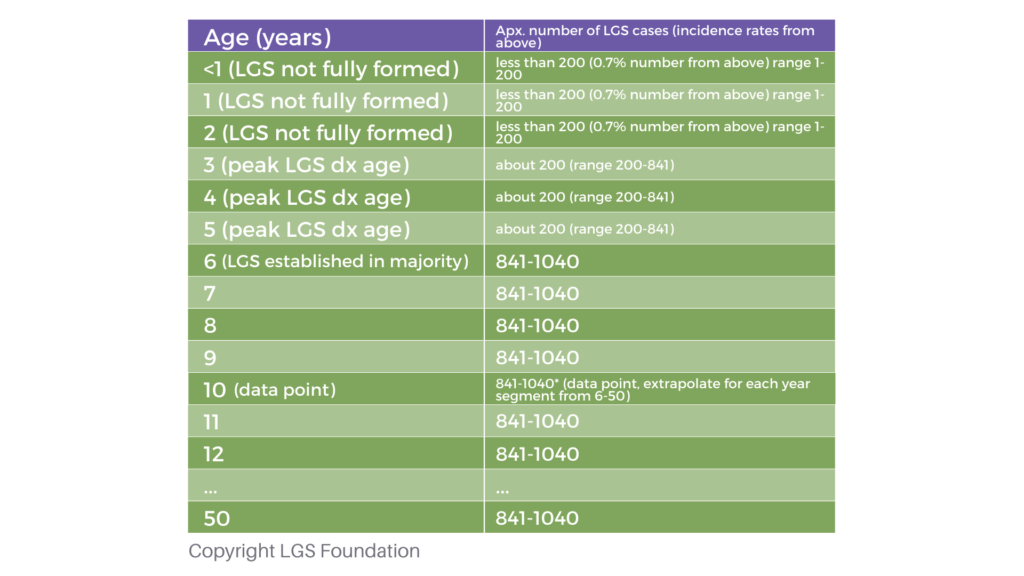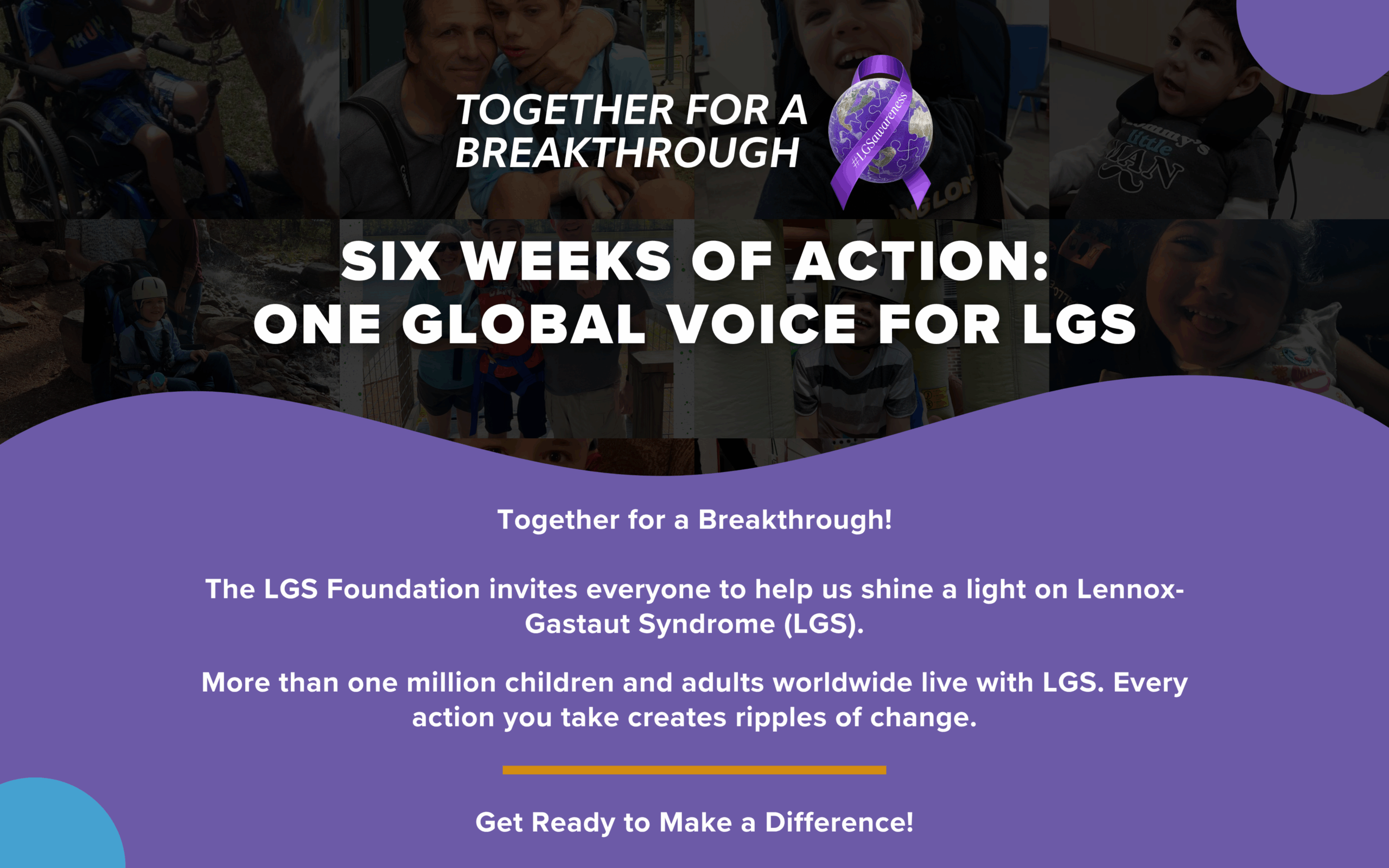How Many People Have LGS?
Who has LGS?
1-2%
of all people with epilepsy have LGS
3-4%
of all children with epilepsy have LGS
48,000
children and adults in the U.S. have LGS
1,000,000
children and adults have LGS worldwide
- LGS is typically diagnosed between 2-5 years of age but can be seen in younger and older children. LGS is established in the majority of children by age 6 years of age.
- Approximately 13,400 children under the age of 18 in the U.S. have LGS.
- About 34,300 adults 18 years and older in the U.S. have LGS.
- 1 in 2,000 people have LGS.
How did you determine these numbers?
Incidence of LGS:
Incidence: 26/100,000 (2.6 per 10,000) children aged 10 years and older have LGS
- 0.7% of Newly Diagnosed Childhood Epilepsy Cases are LGS
- 2.9% of Children with Epilepsy After First Diagnosis are LGS
Previous epidemiological studies have shown the following incidence of LGS in newly diagnosed childhood epilepsy:
- 4 individuals with LGS were diagnosed among 692 childhood epilepsy cases (0.5%) - Camfield, 2007
- 4 individuals with LGS were diagnosed among 462 childhood epilepsy cases (0.9%) - Callenbach, 1998
- 4 individuals with LGS were diagnosed among 613 childhood epilepsy cases (0.6%) - Berg, 2000
According to these studies, then 12 people with LGS were diagnosed among 1767 cases (0.7%) of newly diagnosed childhood epilepsy.
Since there are, per the CDC, approximately 29,000 cases of childhood epilepsy diagnosed each year, 0.7% of 29,000 = about 200 children per year in the US have LGS at first diagnosis.
However, the incidence of LGS after the first diagnosis of epilepsy increases over time:
- Camfield reported 17 LGS cases out of 692 children with epilepsy after first diagnosis (2007)
- Berg reported 21 LGS cases out of 613 children with epilepsy at 2 years, 5 years, and 9 years after diagnosis (2000).
These figures show 38 LGS cases out of 1305 children with epilepsy, making 2.9% of childhood epilepsies LGS. This would amount to 841 children per year in the U.S. who develop LGS after initial epilepsy diagnosis.
Trevathan (1997) published data that shows that 0.26/1000 children aged 10 years and older in the Atlanta area had LGS. This translates to approximately 1,040 ten-year-olds in the U.S. have LGS based on population age/ data.
What does all this mean?
These data show that apx. 841-1040* children per year in the U.S. develop LGS over time. The LGS Foundation estimates the duration of illness from 0-50 years.**

Prevalence:
There are approximately 39,045 to 47,800 total cases of active LGS in the U.S.
Based on these calculations above, the estimated prevalence of LGS in the United States ranges from 39,045 to 47,800 total cases (with 12,120 - 12,520 individuals under the age of 18). This would approximate to 14.4 per 100,000 in the U.S.
Sullivan (2023) showed 5.8-60.8 per 100,000 in a study of the global prevalence of LGS.
*Assumes steady state (same number of births/deaths each year, the same proportion of those who develop the same kinds of epilepsies, the same number of children present with or convert to LGS in each year’s cohort, etc.)
**The LGS Foundation realizes that many individuals with LGS live beyond 50 years of age. However, given the increased risk of mortality as the individual ages, these figures are based on a lifespan of 50 years of age. Therefore, these numbers are our best estimate at this time until further studies are done on the adult population.
Learn More: Watch The Natural History of LGS
Hear from LGS expert Anne Berg, Ph.D.
The information here is not intended to provide diagnosis, treatment, or medical advice and should not be considered a substitute for advice from a healthcare professional. Content provided is for informational purposes only. LGSF is not responsible for actions taken based on the information included on this webpage. Please consult with a physician or other healthcare professional regarding any medical or health-related diagnosis or treatment options.
Updated 3/11/24

